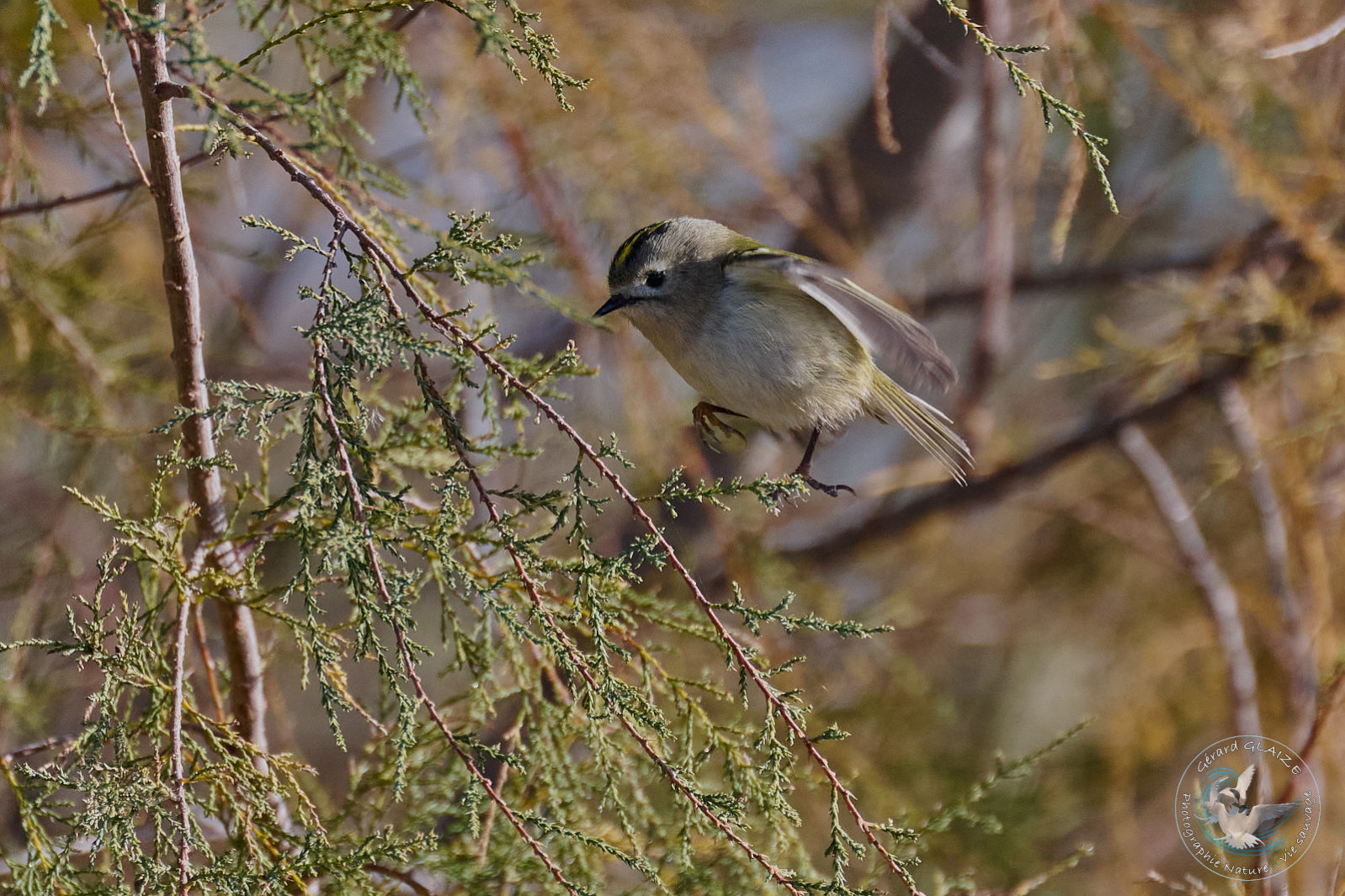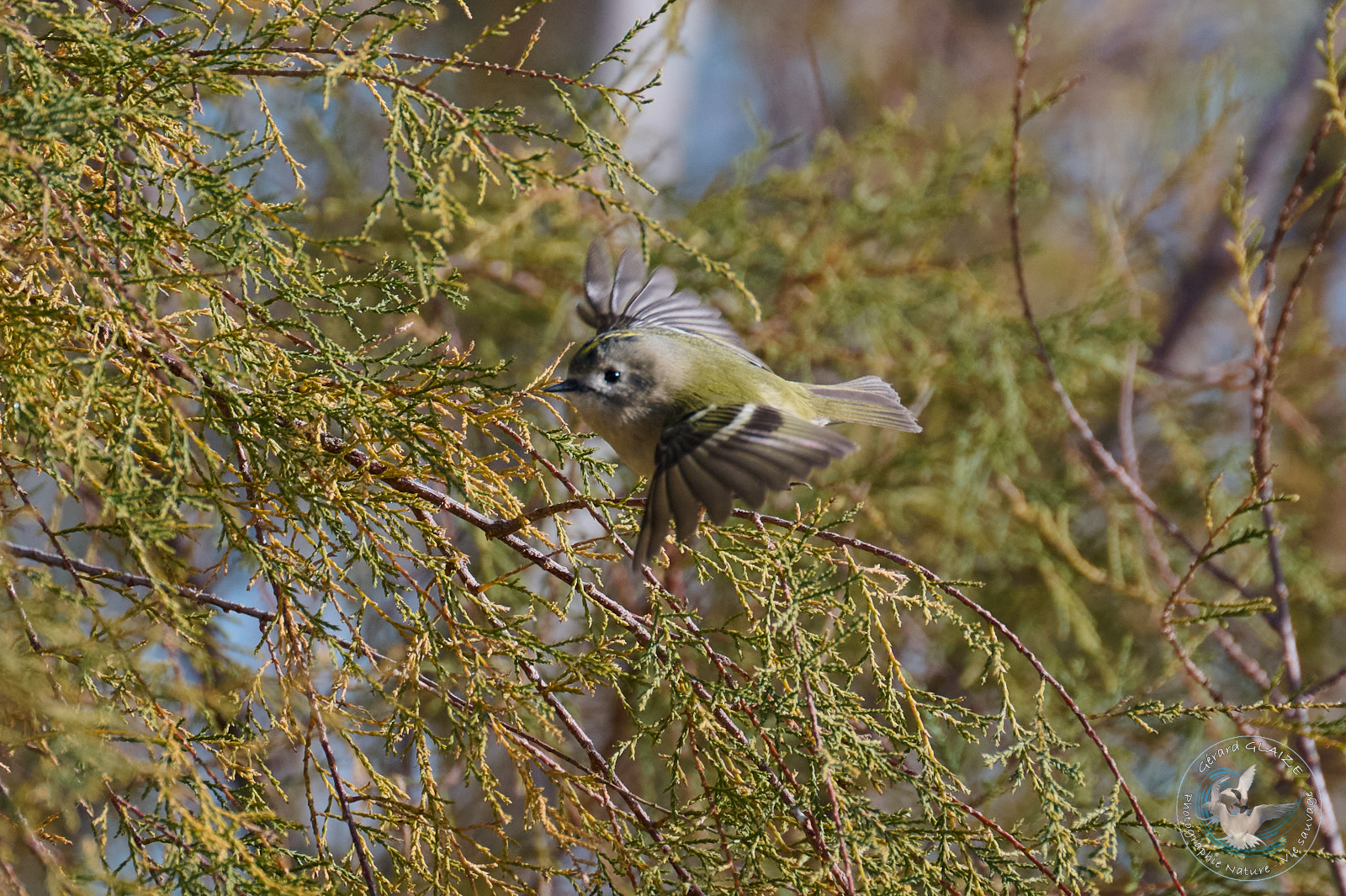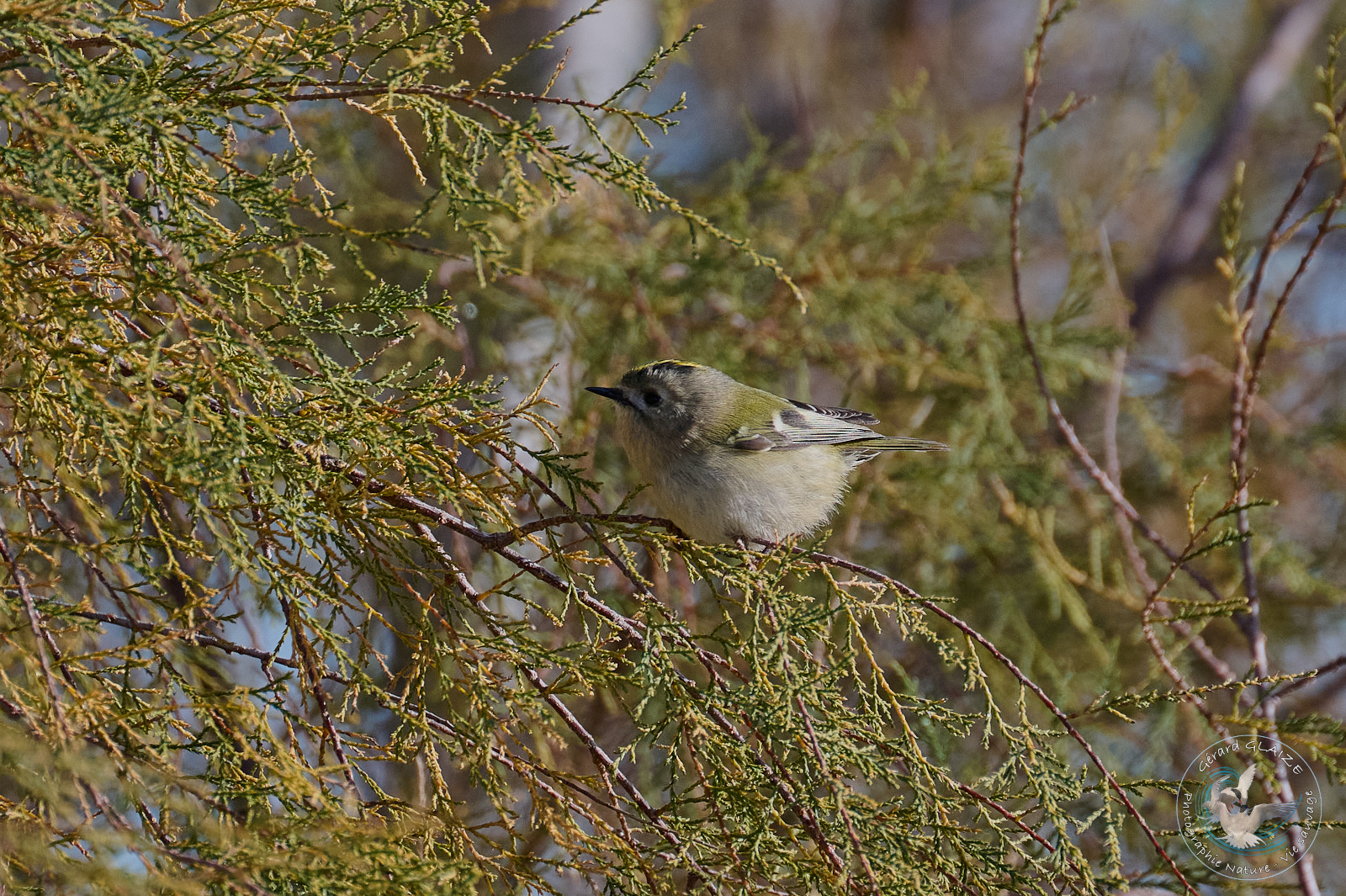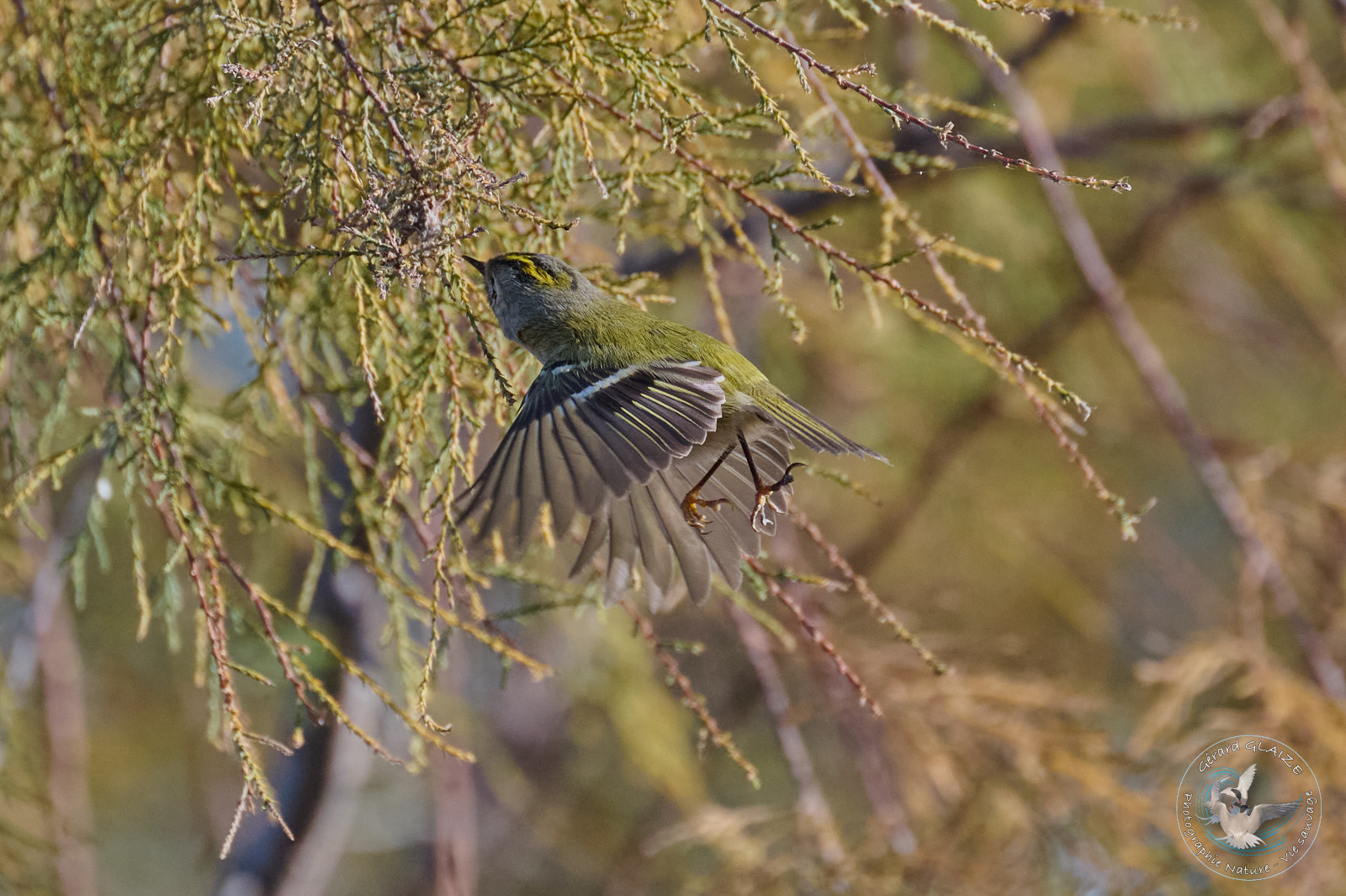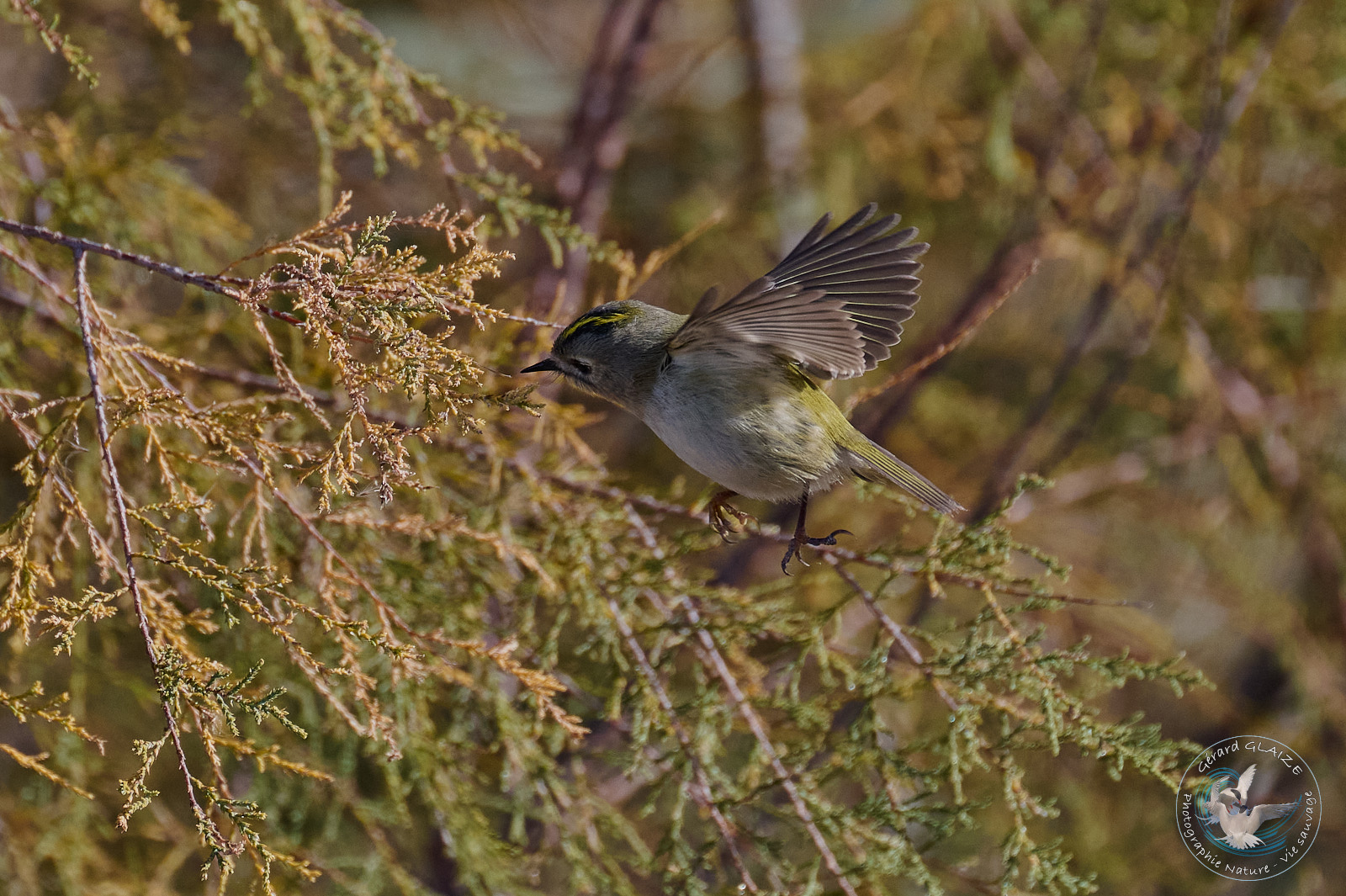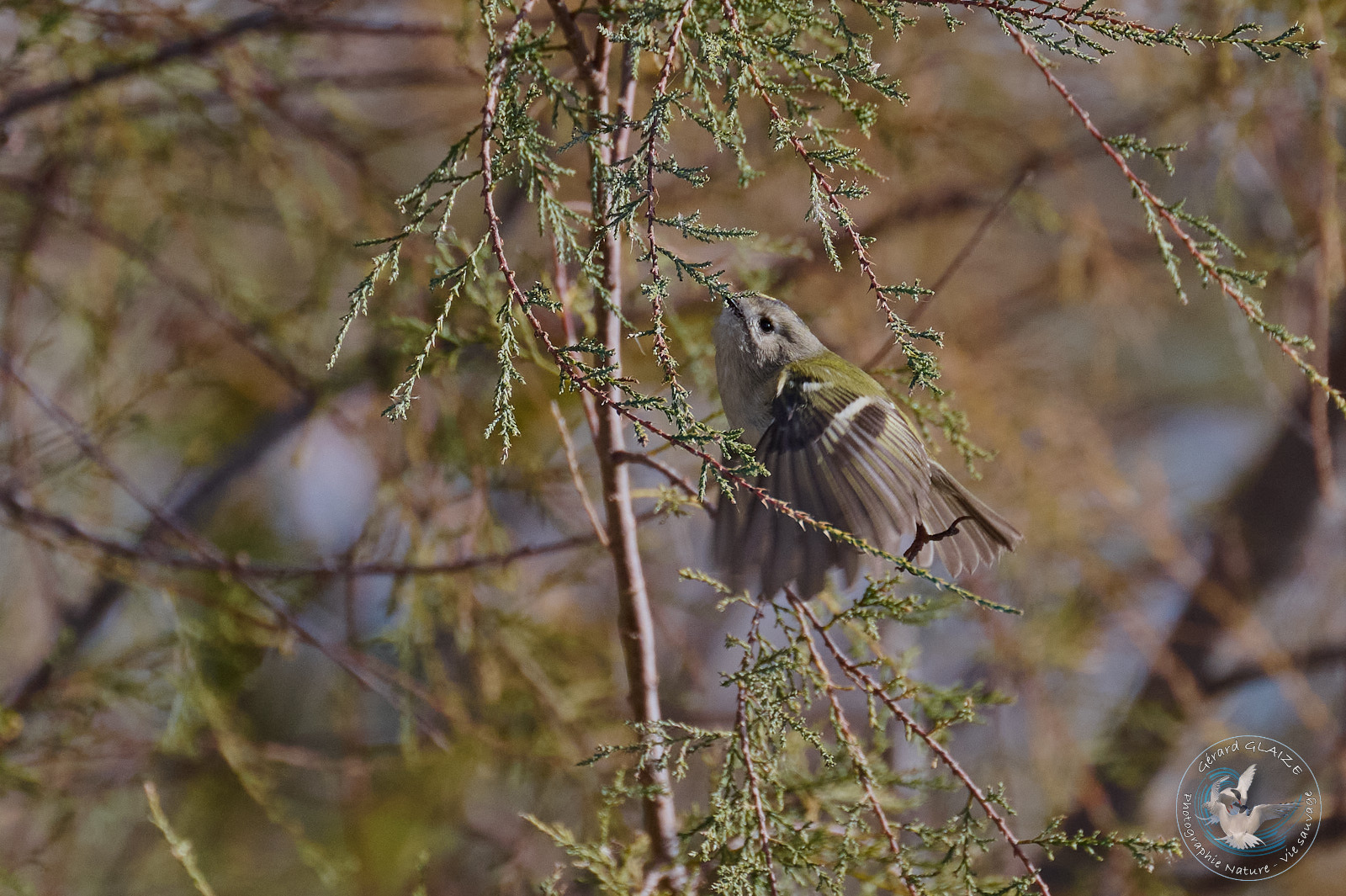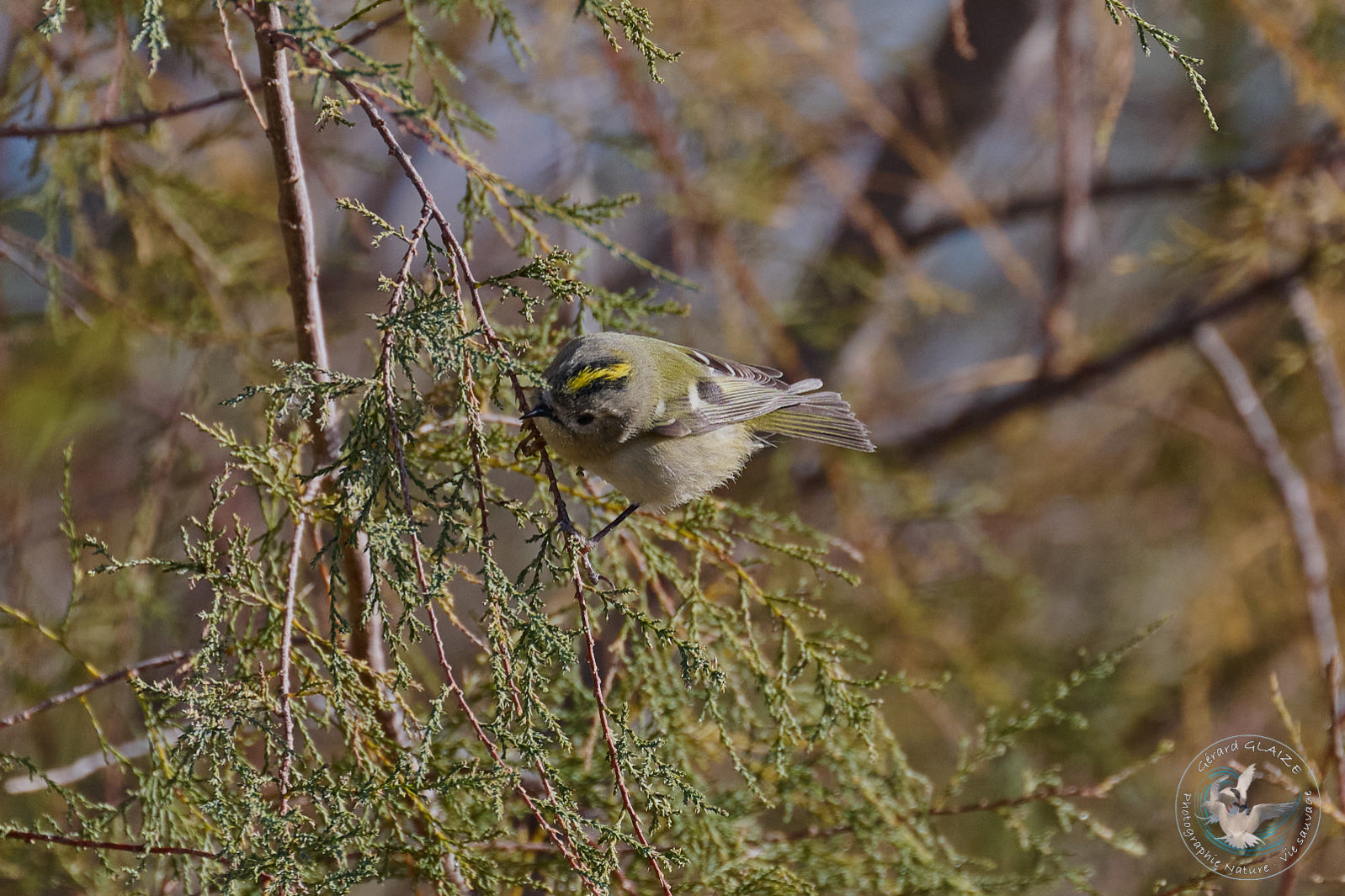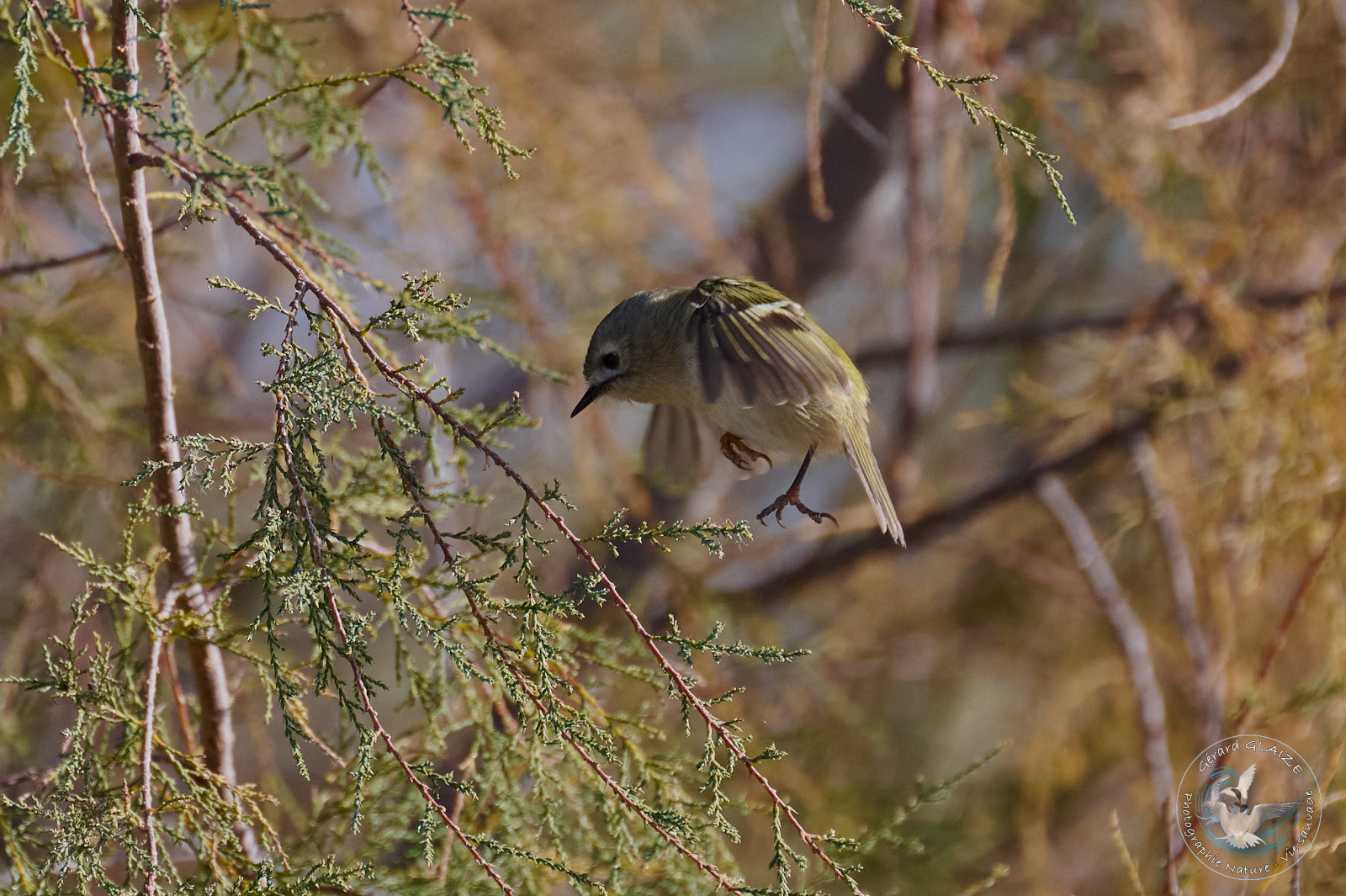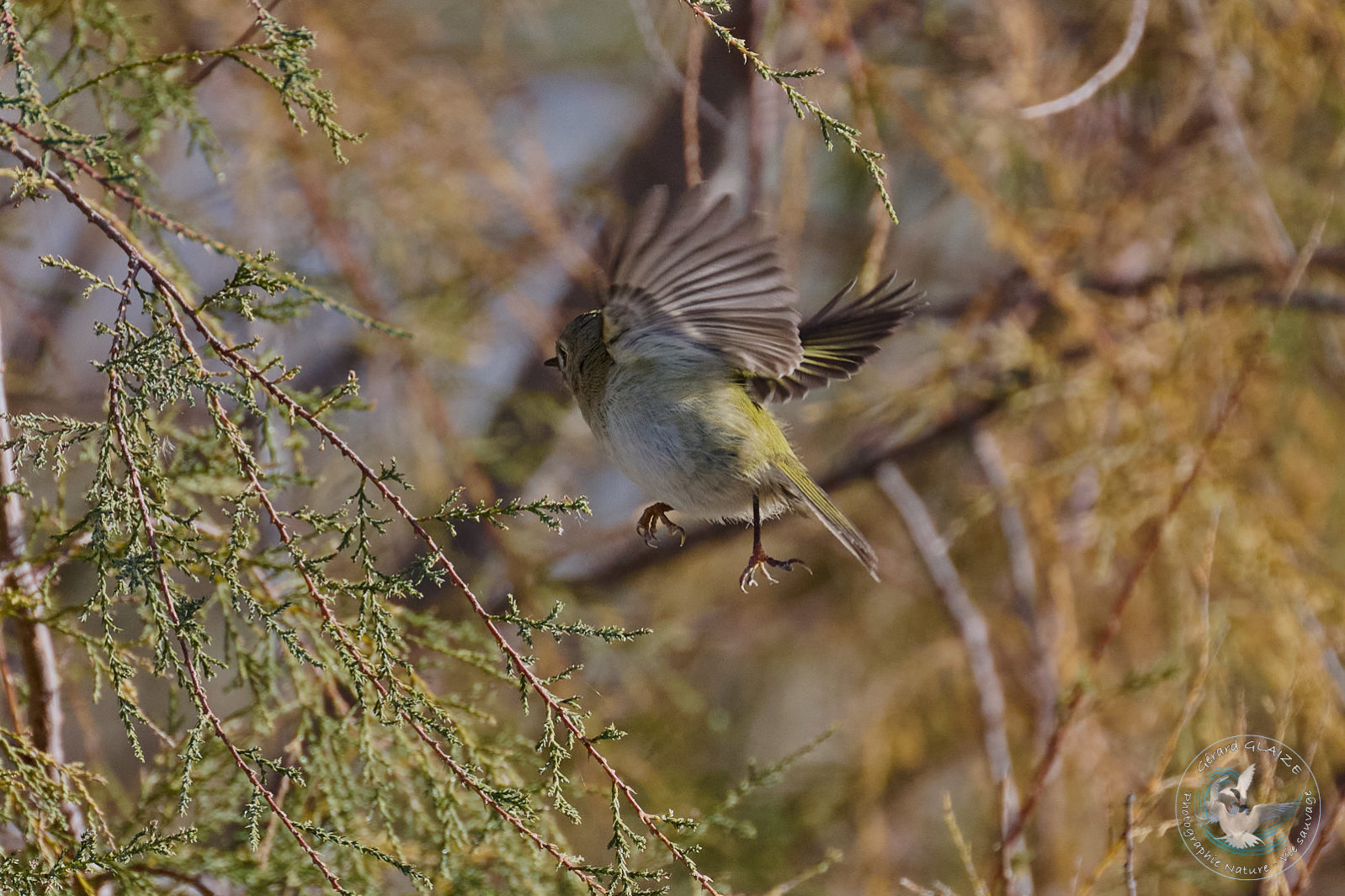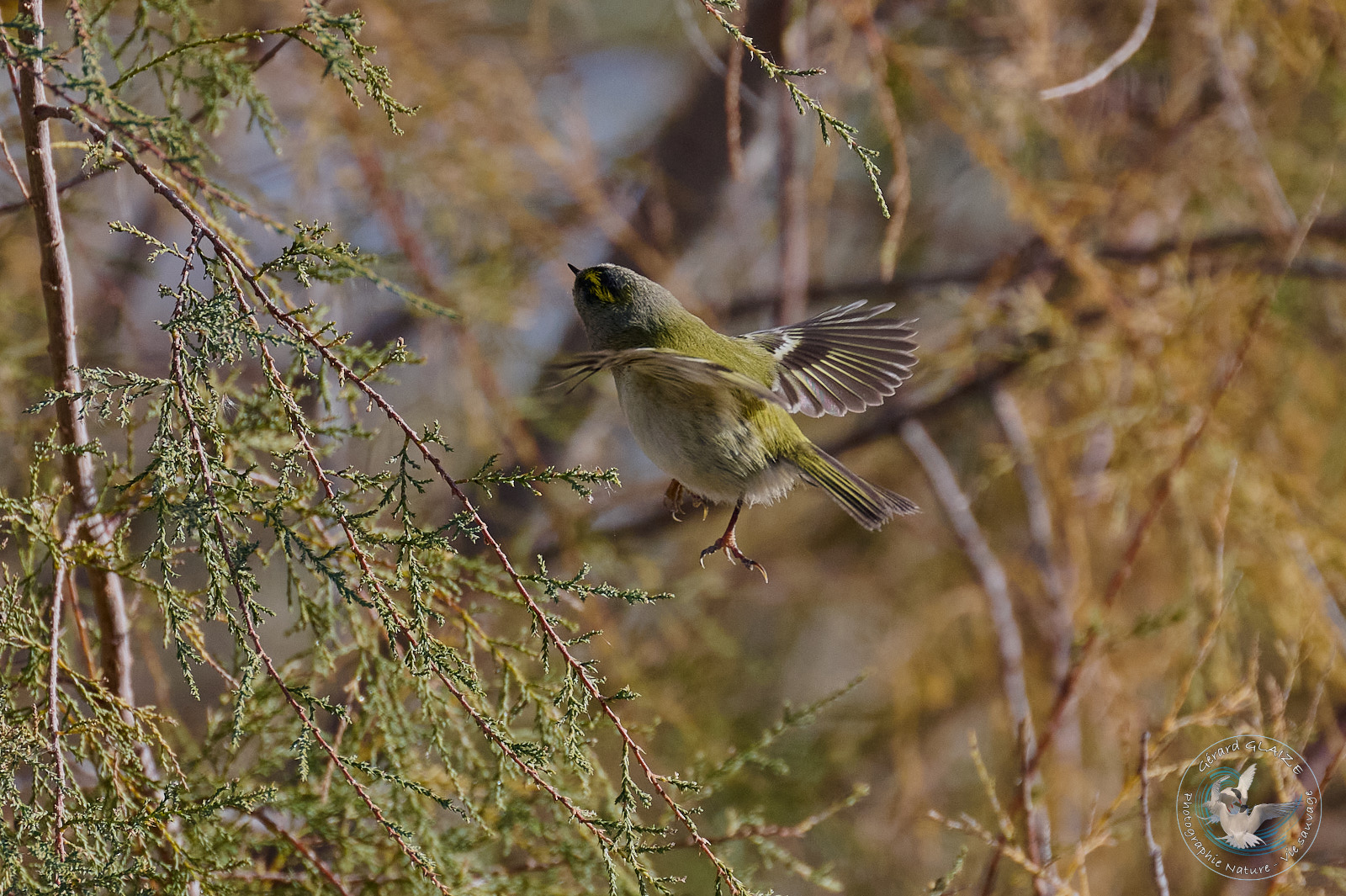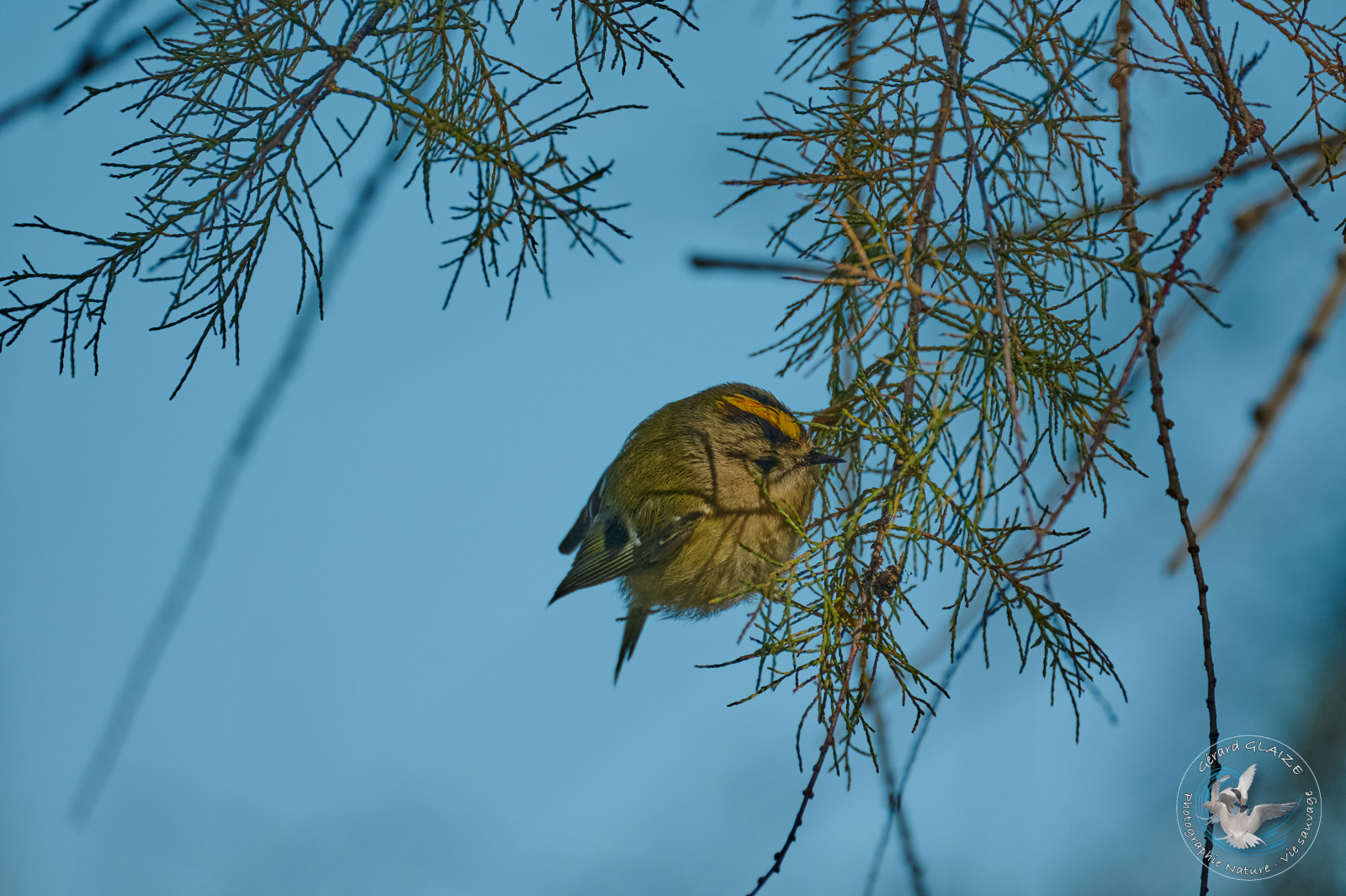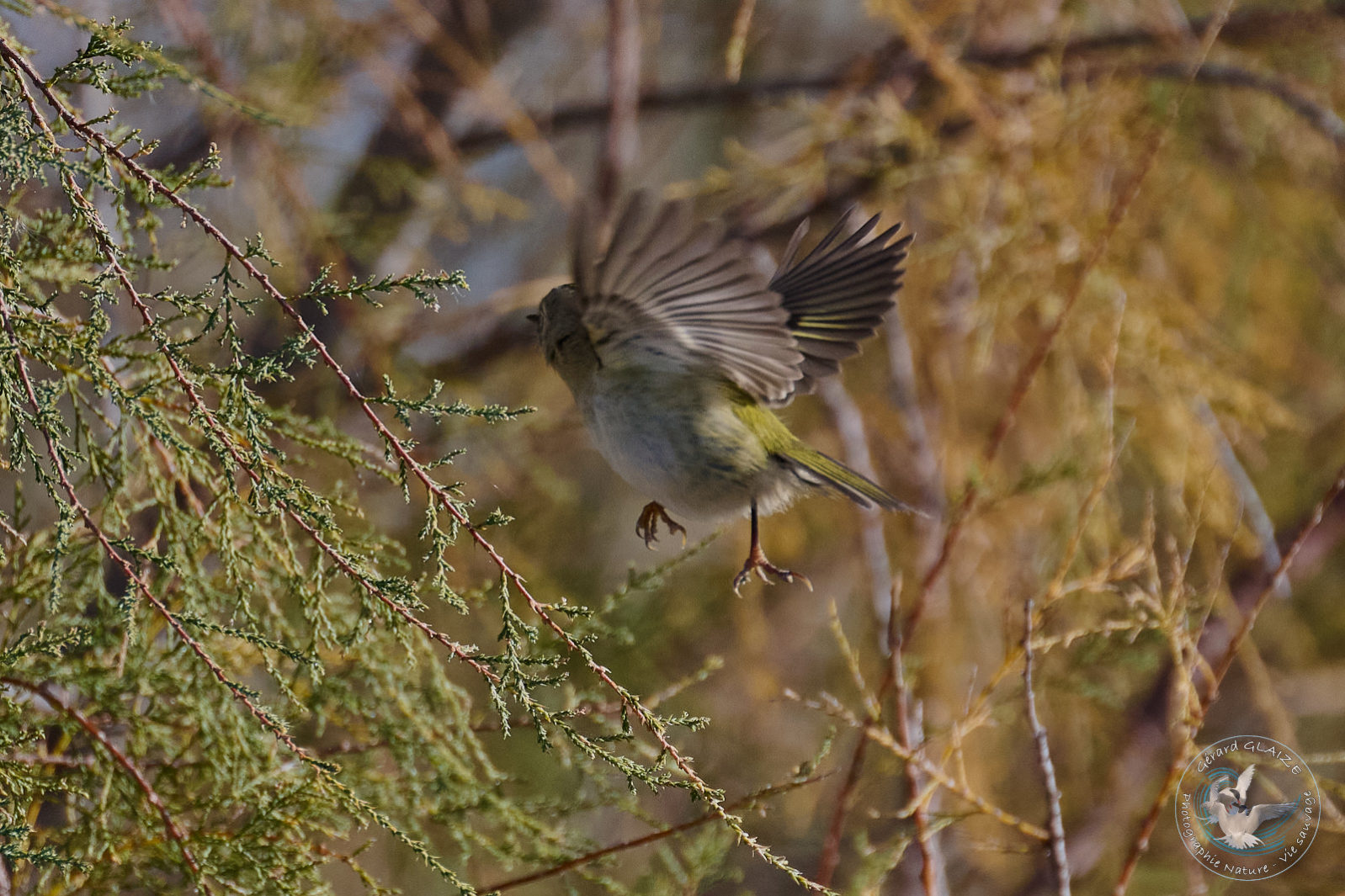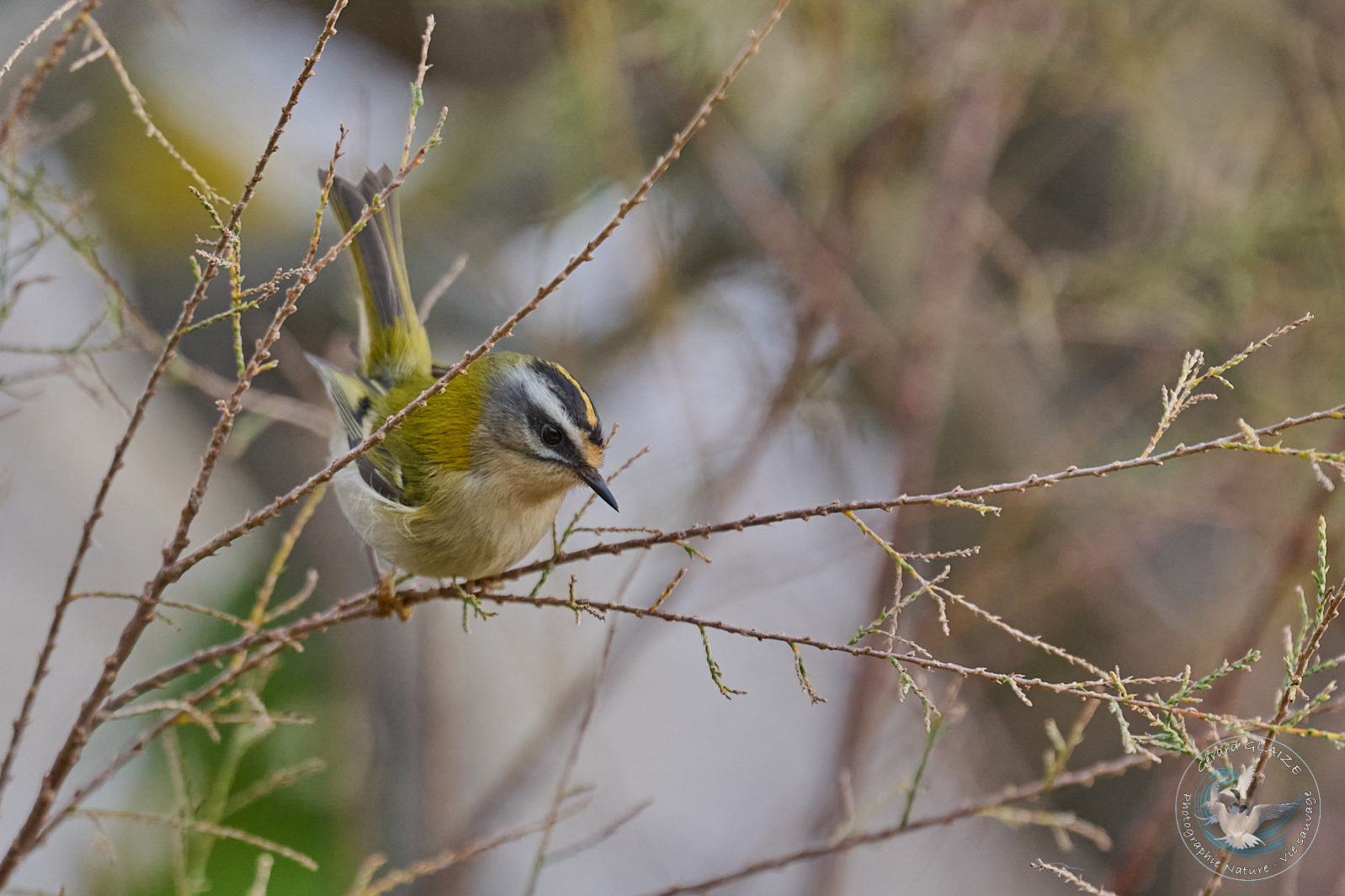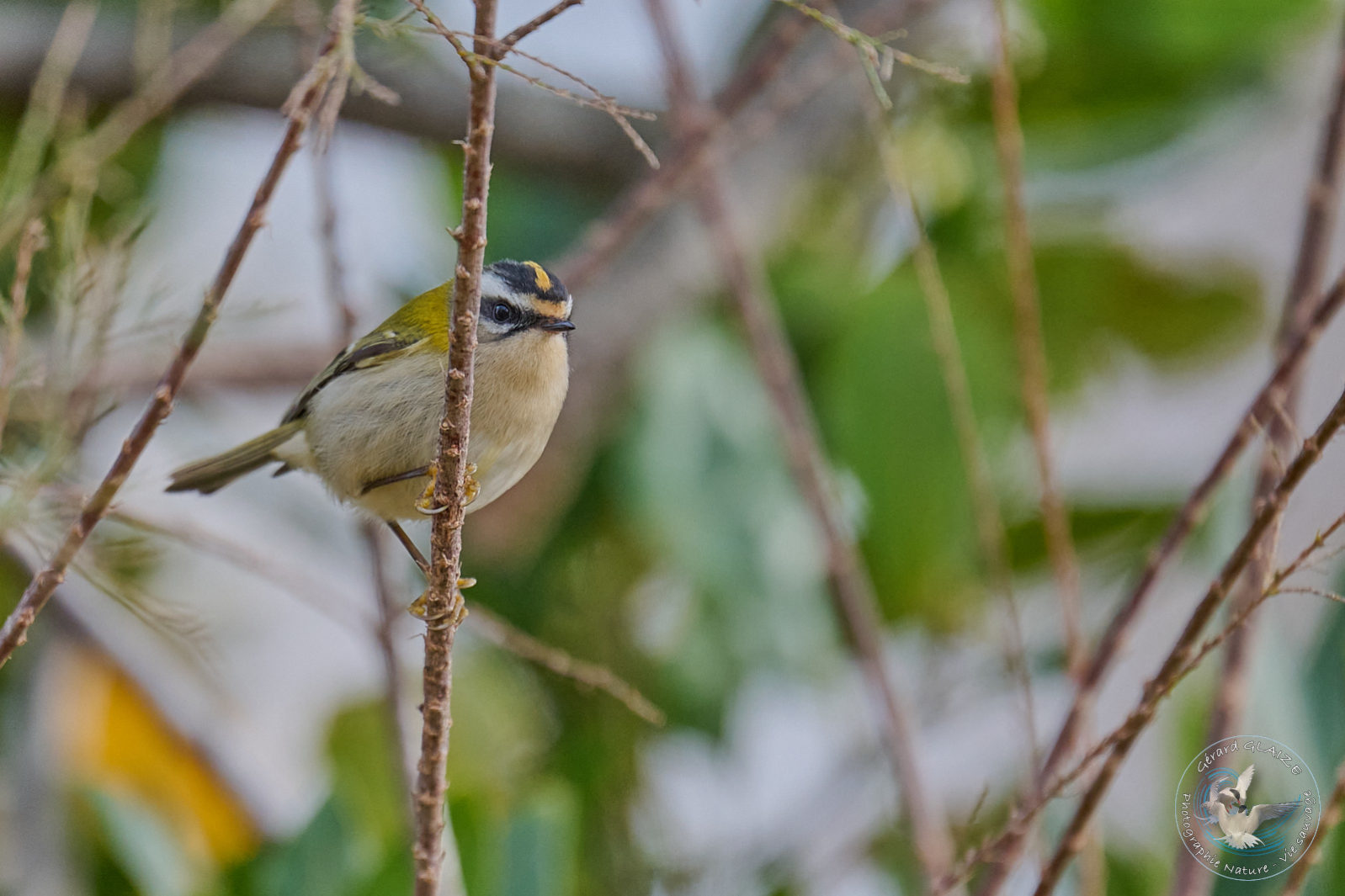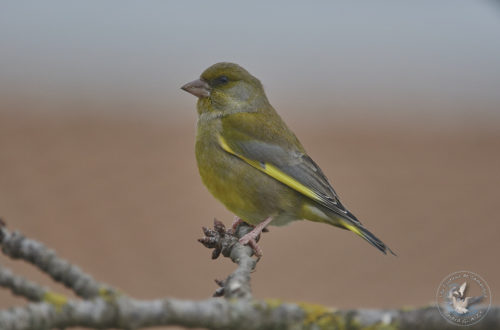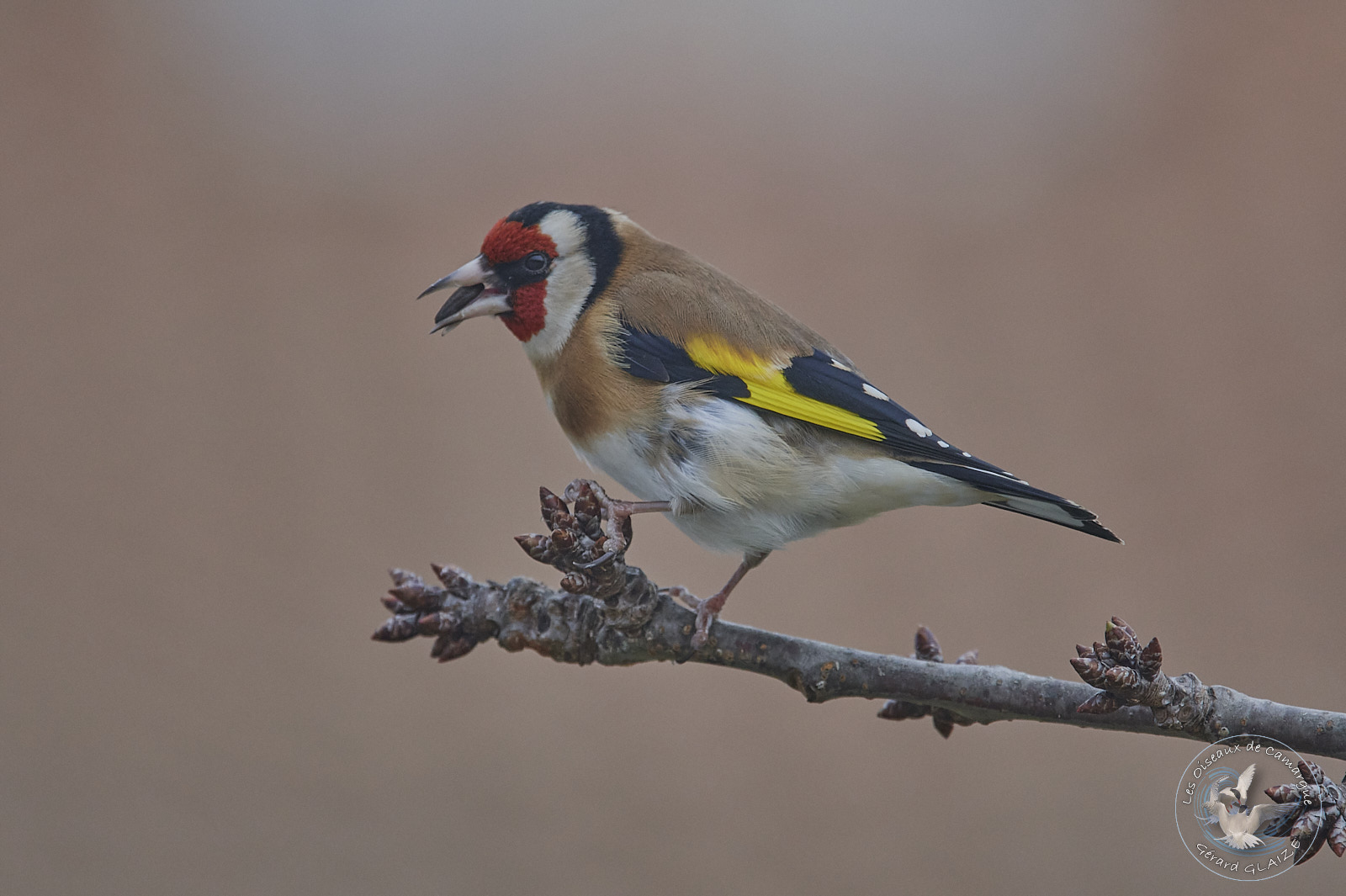Goldcrest
Goldcrest is one of the smallest birds in Europe with its congener the Common Firecrest. It has a size of approximately 9 cm and a weight of 4 to 7 grams. This is part of the Regulidae family, which are very small insectivorous passerines from the northern hemisphere. The beak is black, thin and pointed. Light brown legs have strong toes allowing the bird to stand upside down when feeding. Plumage is yellow-green in its upper part, the more blackish wings have two white stripes. The male has a yellow and orange cap in its center, it is bordered by a black line, that of the female is pure yellow. The feathers of the head form a diadem which gave its name to the Kinglet, they bristle when excited.
Goldcrest is one of the ten very small passerine birds found in France.
Goldcrest
Scientific name : Regulus regulus
Family : Regulidae
Length: 9 cm – Wingspan: from 13 cm to 15 cm
Weight : from 5 gr to 7 gr
IUCN Conservation Status: LC
Flight
The Goldcrest wren can fly easily in dense vegetation, and flutter to find prey using its large rounded wings. It rarely flies more than a few tens of meters, except in migration. This species is capable of traveling up to 1000 km in less than a week. When flying long distances, its flight is undulating.
Habitat
The Goldcrest is a forest bird, so it breeds in coniferous and mixed forests, in large gardens and parks with conifers. Outside of the breeding season, it also lives in scrub and deciduous trees. In the Camargue we can observe it in the tamarisk trees.
Regime – Diet
The Goldcrest feeds particularly on small insects and spiders found in trees. Their needs become enormous during periods of migration. However, during the winter, it also feeds on seeds and insects found on the ground. The young grow quickly on a diet rich in insect larvae and small spiders.
Nesting
The Goldcrest has two broods per year, in spring. The Goldcrest’s nest is shaped like a hammock, built by both parents but especially by the male. This nest is built on the outside of the branches of a conifer. However, this construction can take almost three weeks. The nest actually has three distinct parts. First moss and lichens glued with spider web, and well attached to the branches constitute the exterior part. Then moss makes up the middle part, hair and feathers line the interior. The nest is almost spherical with a narrow entrance near the top. However, it is located relatively high in the trees, about 15 meters above the ground.
The female finally lays 7 to 12 smooth, clear eggs, one per day. Incubation lasts about 16 days and begins before all the eggs are laid. The female incubates, broods and cares for the chicks for the first few days. The male, however, feeds the female at the nest. Finally, the two adults feed the young, then they leave the nest at the age of 17 to 22 days.
Protection
This species is fully protected (arrêté ministériel du 29 octobre 2009 establishing the list of birds protected throughout the territory and the terms of their protection). The Goldcrest is however, very vulnerable during periods of extreme cold, and many birds die if the cold persists for too long. BirdLife further reports the species in decline.
Song
The song is a very high-pitched, very incisive, often repeated “sit”. Its very high frequency may therefore be inaudible to some ears.


